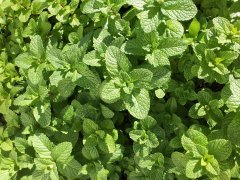How to grow potted peppers? How to fertilize and water potted peppers
If your summer gardening plan includes growing some vegetables in containers, chili peppers should be on your planting list. When the right varieties are carefully taken care of, chili peppers grow better in pots than in gardens, especially in cool or windy climates. At the beginning of the season, chili peppers growing in containers are warmer than warm roots growing deep underground, and later when plants are filled with fruit, moving them to a protected place will keep fragile branches from breaking.
Not all varieties are suitable for containers. According to my experience with Pennsylvania Master Garden owner and others, small fruit chili peppers with dense, branching habits are the best choice for flowerpots. In other words, one of the reasons I grow chili peppers in containers is to make sure I put them near the kitchen door for quick picking, so I turn to small sweet peppers and moderately hot jalapeno peppers.
If I could only grow all my chili peppers in a container, I would approve of & # 39 × Redskinned pepper 39; or & # 39 × Redskinned pepper 39; for sweet pepper, maybe & # 39 / Apachett39; prefer spices. Cool trivia: these three high-quality container varieties are all cultivated in the UK.
Potted pepper
Whether you start with the seedlings you buy or sow your own seeds, you will soon find that young chili plants can benefit from being "sealed" every two weeks to the next size container. Use a high-quality filling mixture to avoid disturbing the roots during each transfer, and the new container should provide about 2 inches of new growth space on all sides. When my chili peppers are in their permanent pots, I usually forward them four times. Chili plants often need to be watered every day in hot weather, so I like to use lightweight, water-retaining plastic pots when growing chili peppers in containers.
Depending on your climate, your chili peppers may grow well on the courtyard table, but in hot weather, plants can cover their roots from strong sunlight. It is easy to put the basin in a shallow box or seeder or even a cardboard box. If there is no shadow, especially dark jars are easy to overheat on sunny days.
Chili peppers may be almost pest-free, but their demand for thoughtful feeding and watering is above average. First of all, let's talk about water, because chili peppers grown in containers are never allowed to dry and grow best under continuous light moisture. How long you need to water depends on the weather, but you can easily judge their dryness by gently tilting them to determine their weight. Very light jars are dangerously dry. If a large pot pepper dries up to wilt juice, you need to water it many times to get it done.
The easiest way to feed chili peppers in a container is to use a water-soluble liquid plant food every week when the plants are hydrated and not under pressure. Insufficient plants have light green leaves and almost no new growth, while happy breeders are busy producing large amounts of flowers and fruits.
I often alternate homemade liquid fertilizers with various commercial products, which makes feeding my chili peppers as intuitive as science. If I buy fertilizer especially for potted chili peppers, it will be a good source of all three major nutrients, plus calcium and magnesium, to prevent nutritional stress during fruit interplanting.

- Prev

How to grow tomatoes and strawberries in pots? What are the considerations that affect
Containers for growing some or even all crops can provide greater flexibility and opportunities. You can grow food in pots that you can't grow in the soil; it's easy to move frosty plants under cover when it's cold; or you may use containers to make the most of the suntrap courtyard.
- Next

How to deal with the strong fecundity of wild mint varieties? Matters needing attention in medicinal use of peppermint plants
Wild mint varieties, out of curiosity, I began to study this plant family a few weeks ago, because the number of wild invasive mint species is impressive, though unsolicited, but spreading in my lawn and garden. These perennials pass through the underground stem
Related
- A course of planting techniques and methods on how to grow carrots
- How to plant the latest tulips?
- Is it better to pick tea in the morning or in the afternoon? When is the best time for tea to be picked? what is the third or fifth tea?
- Launch Yuanxiao Happy combination Haocha + Tea Yuan healthy Taste
- Penghu Tourism "Fireworks 20 Parade with You"
- 2022 West Lake Happiness holds "Digital Revitalization Voucher" and draws iphone13 and laptop.
- Banqiao Fuzhou social houses are designed to change start-up combined with police elimination to create a safe and livable environment
- The convenient measure of "mechanical weeding" in Xinbei has been abused and the Agriculture Bureau has imposed heavy penalties on the illegal land consolidation.
- Changgeng University Joins Hands with Four Memory Factories to Rescue Memory Talent Shortage
- The list of Taiwan's top 100 MVP managers is listed by the Director-General of the Farmers' Association of Sanxia District.

